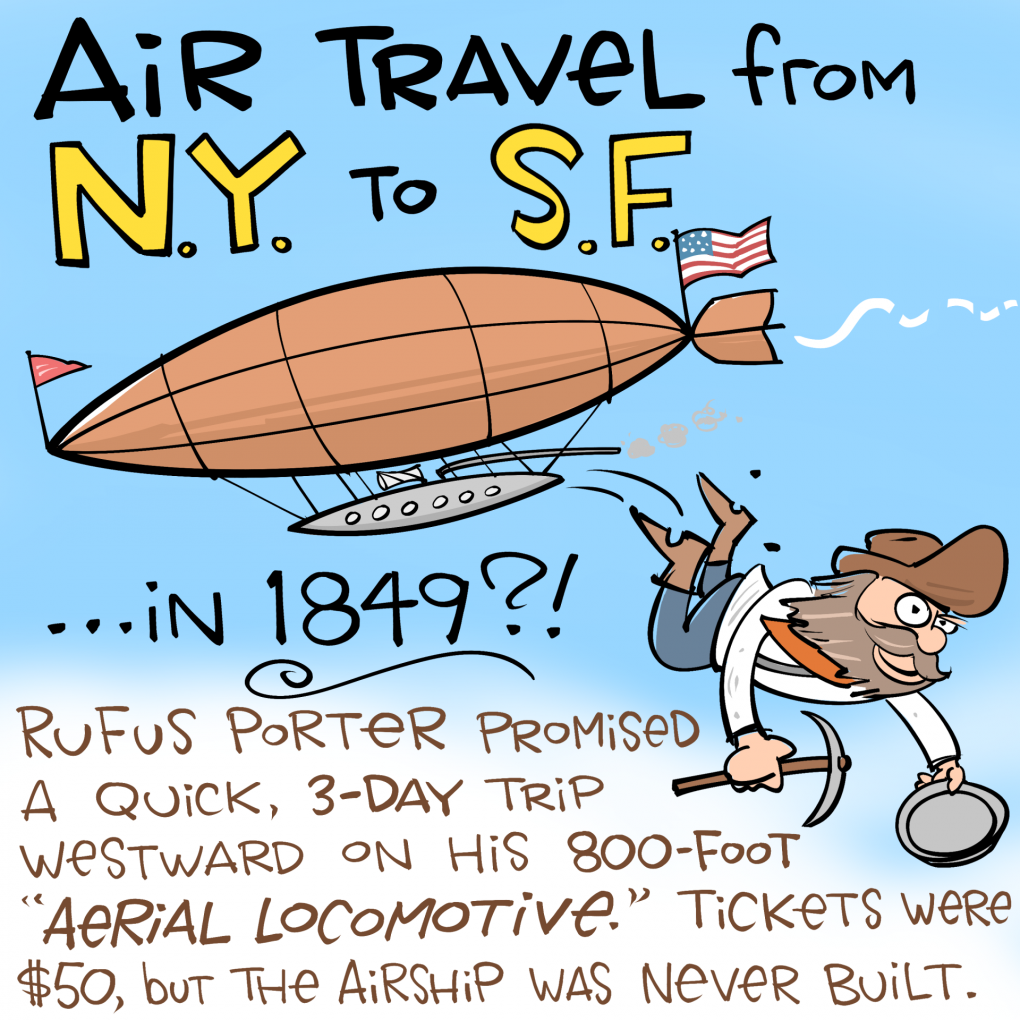If you lived on the East Coast and had gold fever in 1849, getting to California's gold country was not easy.
You had to either travel overland by foot, horse or wagon, or hop on a ship that would take you around Cape Horn at the southern tip of South America. Or you could catch a ship to Panama, where you would have to trudge through the jungle and catch another ship up to San Francisco.
Your trip would likely be measured in months rather than weeks.
Enter Rufus Porter, a serial inventor and artist, who promised his soon-to-be-built steam-powered "aerial locomotive" could get you to California comfortably in three days at speeds of around 100 miles per hour.
Porter might sound like a nut — but he also founded Scientific American, which remains a respected publication today, and has a museum dedicated to his artwork in Maine.
His publication did much better than his transcontinental airline service, which never got off the ground, literally or figuratively.
Porter never sold enough tickets to fund the huge dirigible he promised.
(Perhaps someone also pointed out to him which way prevailing winds blow across the West.)
Eighty years later, though, the monstrous German dirigible the Graf Zeppelin floated over San Francisco after leaving Japan on its 22-day journey around the world.
Knowing what happened to the Hindenburg and the future that awaited the zeppelins, riding a horse across the country seems like a walk in the park.
